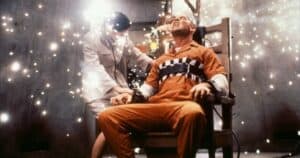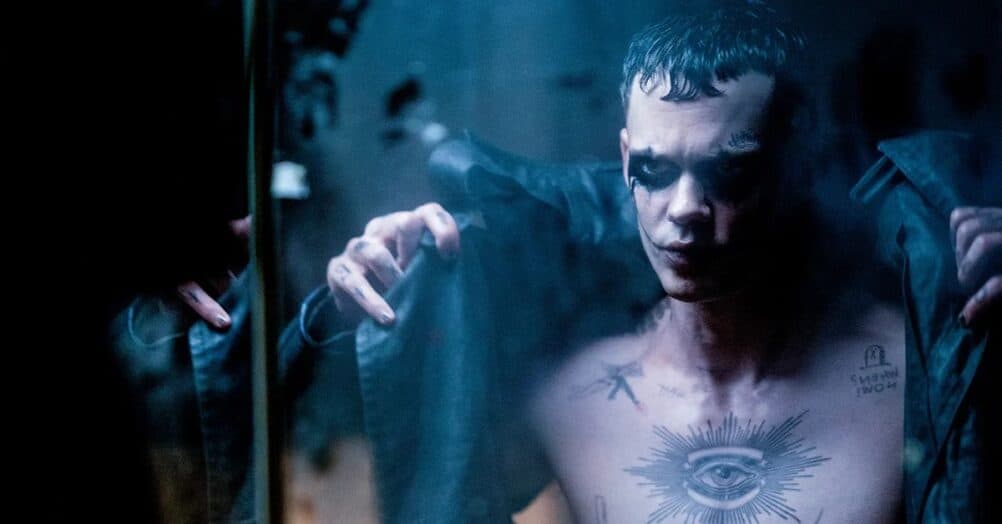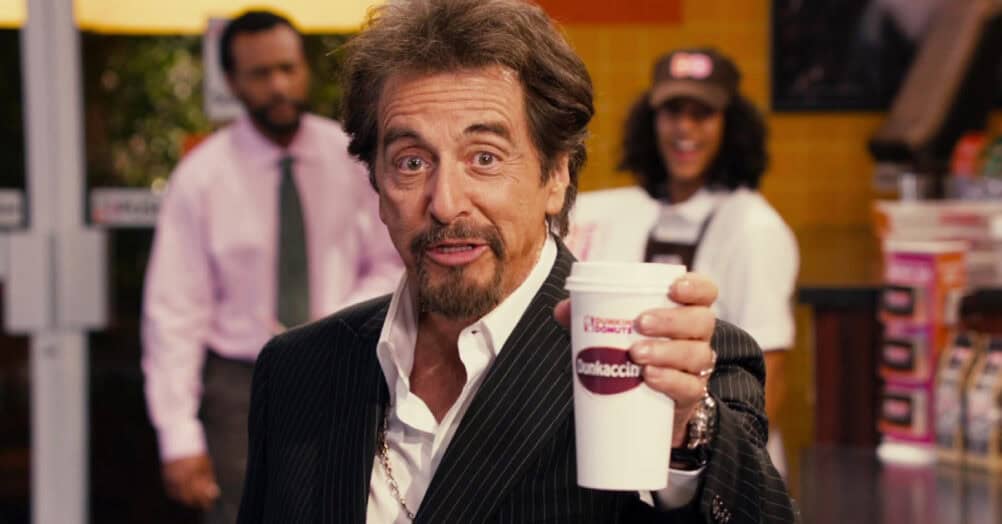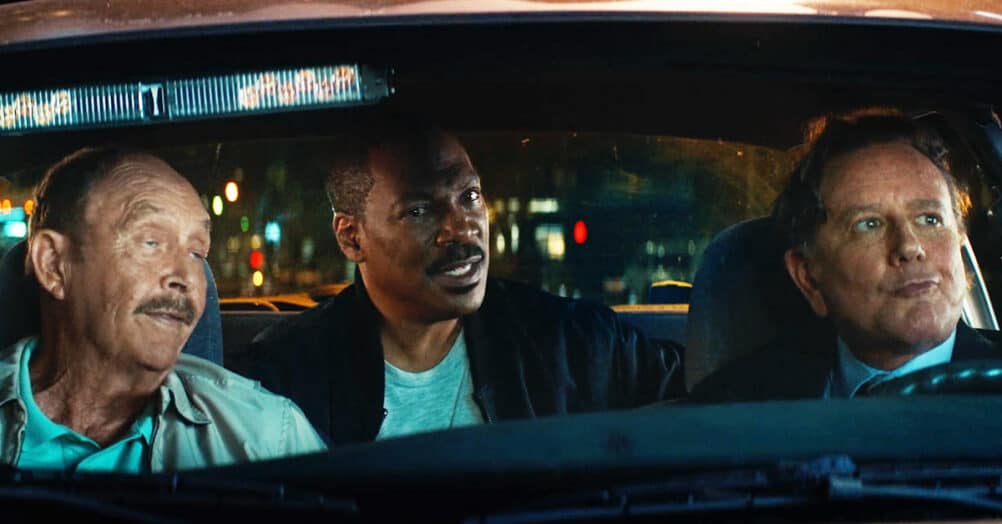Last Updated on August 5, 2021

Ink & Pixel is a source of pride and joy for me as a writer and as such, I’m always striving to take this column further for those who read and enjoy it. If you yourself, or anyone you know, helped to make any of the amazing feature animated films found within this column, I would love to talk to you to further my knowledge. Please contact me at [email protected] so we can discuss it further.
Fact: Animation allows us to create and bring to life images and events that otherwise could not be achieved through the magic of traditional Hollywood live-action film making. Some concepts are, to put it simply, far too complex and visual for us to go crowding up a screen with tangible human actors paired off against all manor of CGI ridiculousness. But through the magic of animation, as well as the talents and minds of so many dedicated artists, we’re able to convey the surreal nature of our thoughts onto the big screen.

I personally can’t think of a better way to represent the collective vision of a persons own dreams than through the use of ink and pixels. And it’s with that in mind that I present to you one of the greatest testaments to this opinion that has ever come to fruition, Satoshi Kon’s PAPRIKA.
PAPRIKA is a 2006 Japanese animated surrealistic science-fiction film, based on Yasutaka Tsutsui’s 1993 novel of the same name. Both the novel and the film follow the story of a revolutionary machine called the “DC Mini” which allows scientists to enter and record a subject’s dream. After the machine is stolen by a self-proclaimed “dream terrorist” it’s up to a valiant detective and a gifted therapist to restore the balance between what is considered dream and the growing fear of what will become our reality.

Tsutsui’s distribution of this wildly vivid tale (in its printed form) was presented to all of Japan by way of a monthly installment inside of a Japanese women’s magazine of all things. Each and every month Tsutsui would present another chapter to the magazine’s audience. As a result the sales of the publication increased significantly during this time. Paprika was to be Tsutsui’s swan song in the literary world, and was regarded as the best work he’d ever produced.
Due to the popular nature of Tsutsui’s epic adventure, about the wishes and terrors of our subconscious becoming a part of our reality, it was only a matter of time before he was approached to adapt the tale into a live-action fantasy film. However, due to the nature of the material and there not being a budget that could meet the demands of Tsutsui’s high concept piece, the idea had been shelved. Understandably disappointed with the project going south, it wasn’t until Tsutsui met Satoshi Kon at a local Anime Magazine convention where the two masters of their craft decided to combine their talents to present PAPRIKA in all of its vibrant, animated glory.

Now commonly referred to as the INCEPTION of anime, PAPRIKA was conceptualized almost entirely while the author of the original texts, Yasutaka Tsutsui, was experiencing a series of recurring dreams. Tsutsui had arranged it so that he had several months to sleep as much as his body would allow, and upon waking would record what bits and pieces he could remember from his dreams. Eventually the dreams became so vivid and reoccurring that there appeared to be a continuity within the random unconsciousness of the sleeping author. A story born of dreams within dreams.

Critically acclaimed writer and anime director Sathoshi Kon (Perfect Blue, Millennium Actress, Tokyo Godfathers) in a move to help his fellow artists better understand his vision for the film, began working on the storyboarding process before the final draft of the script was complete. This is actually a rather bold way to approach the production of a film, considering that when making one you are always working toward an end.

Seriously, if you really think about it, without knowing the end of the film you could conceivably just keep drawing to your hearts content. Now, that sounds great and all, but when time is money (and it always is) and the finale of your film is yet undetermined, it could leave your team wandering aimlessly in their goals. Luckily, Kon was always around the office to answer staff questions and concerns.
Obviously, the staff kept their patience with Kon, as it was known that the man liked to use every moment before the projects deadline to fine tune his contributions. In fact, Kon’s approach to his storyboards was so calculated that when finished left the artists with very little to compensate for in the department of art clean up. When done, the final storyboard consisted of 1,046 shots that amounted to 614 pages, taking a year and a half to complete. In addition to that, roughly a third to a half of the film was done utilizing some form of CGI animation. That’s roughly 350 scenes!

One of the biggest challenges the artists met while making the film was discovering a way that they could utilize the CGI programs that were available to them but still maintain the hand-drawn esthetic that has always been the signature of Kon’s previous films. In the case of the “Hallway with Waves” scene in the character, Konakawa’s dream. The artists used 3-D computer graphics (applying the CGI to the initial hand drawn design) to give the floor its unstable appearance.

In this scene, every buck and warp of the floor coincided with Konakawa’s terrified footsteps as he ran down the hallway. I’m sure that some of you have experienced this before: While you’re asleep, the world in which you inhabit inside the dream suddenly becomes terrifying and strange. Everything around you appears to be happening in slow motion and any attempt to run from danger becomes slowed, the nightmare licking at your heels, making you feel as if you’re running in quicksand. Well, this is that sensation in stunning CGI form. The next step is to light the scene using a technique called “fall off”.

When applying fall off it gives new physics to the rippling effect caused by the warping of the carpet. Lighting these bends and waves within the fabric correctly is crucial to making the effect work for the scene. It’s a sensation that’s been widely dreamt about for centuries, presenting it improperly would only take your audience out of the film within seconds.
An effect used in this film that I found particularly fascinating was the attention to detail during the “Parade” sequence. Let’s ignore all of the majestic and highly detailed peoples and animals for just a second and focus on something that could very well go overlooked by many … the confetti. Yes, something as simple as falling bits of paper can truly make or break a scene when attempting to present a massive and jubilant cavalcade of celebrates stemming from your subconscious.

The confetti was used to highlight the parades flamboyancy, as things inside of your dreams are often exaggerated and overwhelming. Consider this – the white confetti falls in front of the films characters while the green or other colored pieces are seen falling behind moving objects within the scene. This establishes depth within the frame of the shot. There were 5-6 angles in which the confetti would fall from, each of them strategically placed to coincide with either the human characters or the inanimate objects (buildings and such) placed throughout the city streets.

Imagine if you will, 100,000 pieces of confetti on-screen at once. And after countless hours of stationing these tiny bastard pieces of colorful paper everywhere a grand total of 650,000 pieces of confetti were used during this scene. Now, you’re probably saying, “Yeah. But they’ve most likely already developed a computer program that makes tasks like that easy.” Wrong! Each piece needs to be calculated with it’s own weight, float, and wind velocity. Every last piece. Do you want to do that? I didn’t think so.
And while we’re on the subject of interesting achievements during the making of this film, I would be remiss if I did not mention that this was the very first film ever to use a singing synthesizer called a Vocaloid. This newly developed program allowed the films composers to type in lyrics and melodies into a computer that would then arrange the input and use it to create the films bizarre but appropriate soundtrack.

I would imagine that the reason for this bold approach to such an integral part of the film making process was that there was very little that was conventional about the production of this film. Kon was trying his best to immerse his audience in a world where your subconscious is in charge of what you perceive to be real. There’s no wrong or right inside of the dream world, but there is a level of familiarity and that must be maintained if your to identify with even a very surrealistic environment.
PAPRIKA, after a wide release in Japan and a limited release inside of the United States earned a total gross of $882,267 domestically. The film is extremely popular among the Sci-Fi Anime crowd and even won Paprika won the Best Feature Length Theatrical Anime Award at the sixth annual Tokyo Anime Awards during the 2007 Tokyo International Anime Fair. The film garners an 83% “Fresh” rating on RottenTomatoes
and has been released in both DVD and Blu-Ray formats (the Blu-Ray being one of the most stunning animated films to date presented in this format).

Sadly, the films director, Satoshi Kon, passed on due to a very private bout with pancreatic cancer in August of 2010. Though he was alive to see the success of this film and receive all of the accolades that came with it, it saddens me to think that he won’t be able to see just how long it will live on in peoples memories.

But who wants to end this article on a dour note? I certainly don’t! PAPRIKA is one of those films where you’ll see something different each time you watch it. After it’s over, you’ll sit around with your friends and talk about it for hours. Watch it, and I dare you not to have trepidations about what you mull over before slipping into dream land. Is there a colorful parade waiting for you, or a haunting, nagging whisper aiming to manifest itself though your dreams? Your subconscious is an unruly weapon of your own mind. Sleep tight.

















Follow the JOBLO MOVIE NETWORK
Follow us on YOUTUBE
Follow ARROW IN THE HEAD
Follow AITH on YOUTUBE